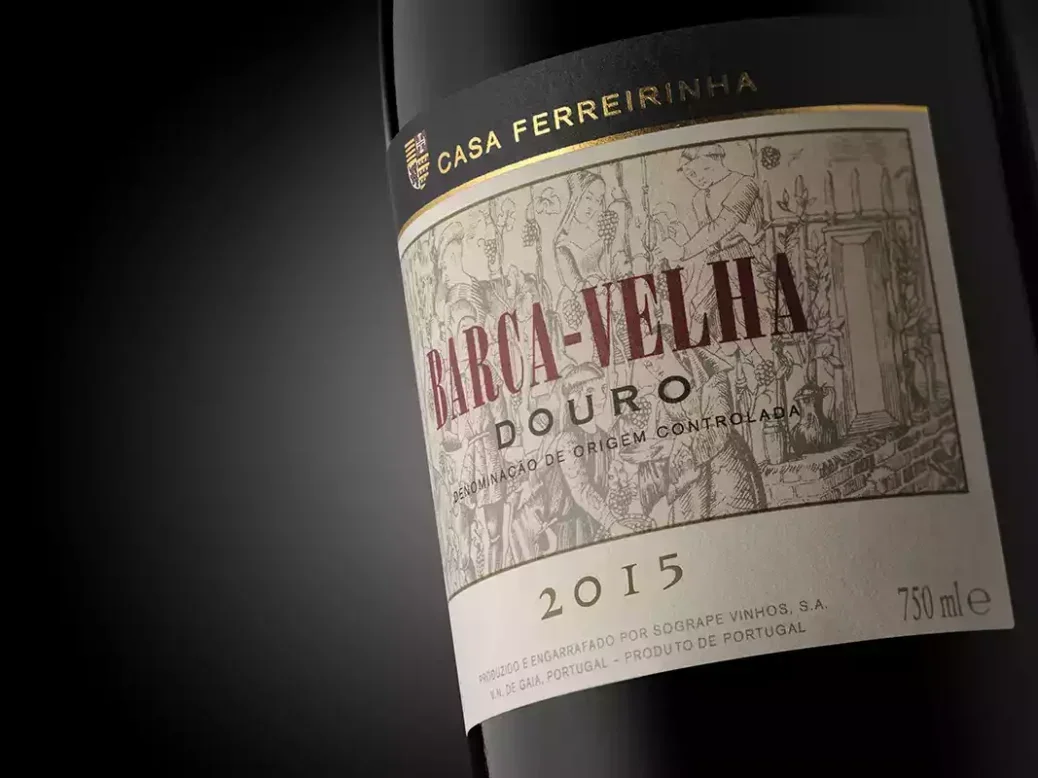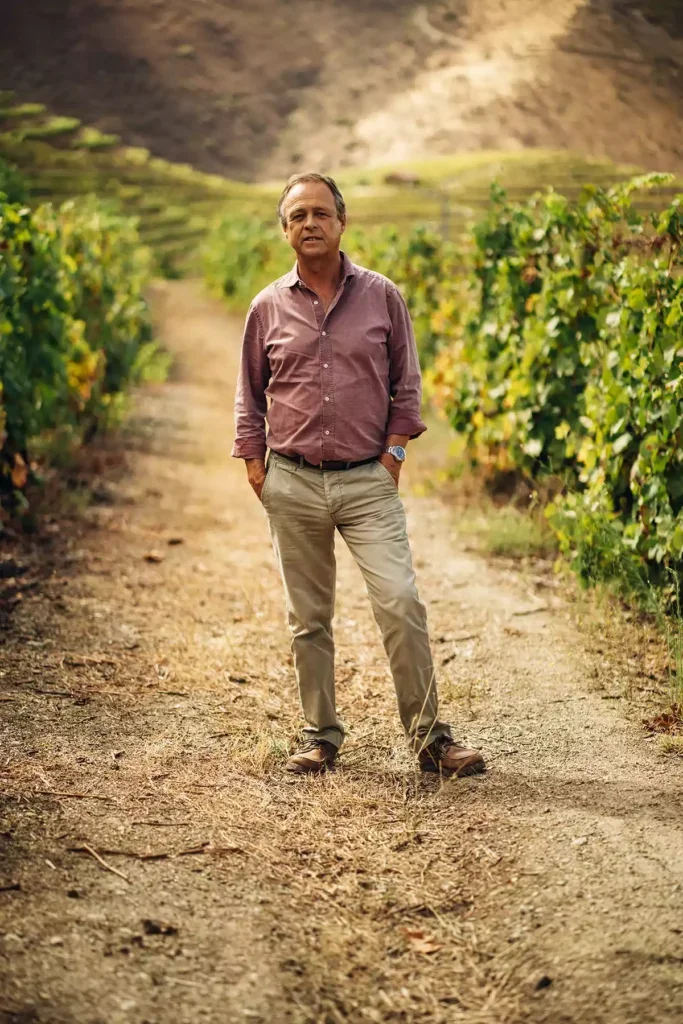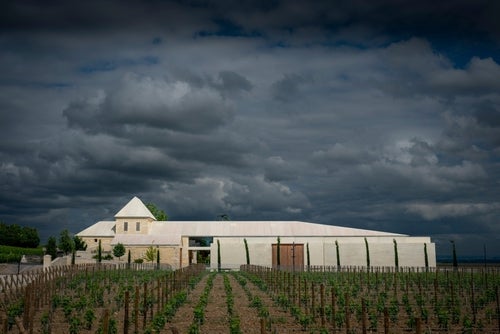
Born in 1952 but a product of only 21 vintages (1952, 1953, 1954, 1955, 1957, 1964, 1965, 1966, 1978, 1981, 1982, 1983, 1985, 1991, 1995, 1999, 2000, 2004, 2008, 2011, and now 2015), Casa Ferreirinha Barca-Velha—the original Douro red—has the ring of a riddle about it.
For the keepers of this vinous flame there is a simple answer as to why the Douro icon is long in the tooth but short on the ground. In the words of Luís Sottomayor, Sogrape’s Head of Winemaking, “Barca-Velha has its own identity. It is a wine to live for a long period of time. It is more exigent.” In the spirit of this raison d’être, the “new” 21st release from 2015 (“just starting to show its potential,” remarked the winemaker) was shown alongside a vigorous magnum from 1999 (“arriving at peak complexity”) and a remarkably elegant bottle of the 1982 (“on a plateau”). QED.
2015 Casa Ferreirinha Barca-Velha: A baby
“Launching eight years after the vintage and still being a baby sets Barca-Velha apart,” said Fernando da Cunha Guedes, President of Sogrape (Casa Ferreirinha’s owner). He does not exaggerate. While the giant that was to be declared Barca-Velha 2015 on February 19, 2024 lay in a deep slumber in Casa Ferreirinha’s cellars, the “New Douro” group’s elite producer members launched their 2015 Douro reds in November 2017. Much as the top-tier wines had good aging potential, their broachability was striking. Dubbed “the [20]11 and a half vintage” by Teresa Ameztoy of Duas Quintas, we had agreed that they combined the textbook balance of 2011 (which produced grapes big in sugars, phenolics, and acidity) with the charm of 2012.
On its launch this June, Sottomayor drew a different comparison for Barca-Velha 2015, remarking on “a strong structure that echoes the grandeur of Barca-Velha 2011, along with a vibrant acidity and elegance evoking the distinctive character of Barca-Velha 2008.” Compared with 2012’s charm-fest, Douro reds from 2008 were positively austere, hence Sottomayor’s conviction that Barca-Velha 2015 will age for even longer than its predecessors from 1982 and 1999. The winemaker attributes this ultra-impressive aging potential to the cocktail of hot and cool weather in 2015—which, he explained, accounts for the 2011-like mature aromas and grape tannins wed to a 2008-like tension in mouth—and also to the fact that the 2015 vintage—a 16,567-bottle release—produced around half the volume of the preceding 2011 Barca-Velha.
The generation game
In addition to highlighting Barca-Velha’s track record for aging, this rare mini-vertical showcased vintages from all three winemakers who have presided over the Douro icon since 1952. The 1982 vintage was bottled by Fernando Nicolau de Almeida who created Barca-Velha, but declared by his successor José Maria Soares Franco. Predominantly sourced from Quinta do Vale Meão (the original Douro Superior backbone), this willowy, red-fruited blend was dominated by Tinta Roriz (aka Tempranillo) and, like the 1999 vintage, aged in 100% new Portuguese oak.
Bottled and declared by Soares Franco, the 1999 vintage was the first to be sourced predominantly from Quinta da Leda in the Douro Superior, which has remained the backbone. Having overtaken Tinta Roriz, the lead variety of Touriga Franca and a higher proportion of Touriga Nacional most likely explain its darker yet elegant fruit profile and rich, structured tannins. Commenting on this shift, Sottomayor explained, “Nowadays, Tinta Roriz vines are too productive, so they have lost some intensity and quality in recent years, but the principal reason for increasing the Touriga Franca and Touriga Nacional is because Tinta Roriz suffers from more hydric stress.”
In common with the other 21st-century releases, Barca-Velha 2015 was aged for longer in finer grained French oak, which has refined the tannins and better preserved fruit and freshness. A unique feature of the 2015 vintage is the debut of Sousão, an assertive, thick-skinned Portuguese variety that has become increasingly popular in the Douro. Bottled and declared by Sottomayor, he cautioned, “[W]e took our time to use it, first vinifying it alone to understand its potential and using it in Ports to see its impact.” Although he thinks it will never be a major component, he described Sousão as “a wonderful variety that really helps us because climate change means we need to maintain freshness.”
Climate change is on Sottomayor’s mind. “I am preparing Sogrape for the next generation,” he said, rolling off a list of initiatives, including acquiring higher altitude Douro Superior properties [Tapada do Castanheiro in 2014, Muxugata in 2018, and a neighboring vineyard this year], planting new vineyards and, at Quinta da Leda, planting new varieties, expositions, and elevations that are better adapted to climate change. The winemaker and Guedes hope that these developments will boost the quantity and/or frequency of future Barca-Velha releases, but there are no guarantees. Production rarely exceeds 30,000 bottles and, in 2017, 2018, 2019, and 2020 (none of which vintages has been declared) the average annual production was 19,000 bottles and 2,000 magnums. As for the longevity that defines Barca-Velha, Sottomayor is certain that today’s wines are better… which is saying something when he reveals that Barca-Velha 1952 is still showing well and the 1954 vintage is “wonderful.”

Tasting
2015 Casa Ferreirinha Barca-Velha (Douro DOC)
Vintage: Good winter water reserves allowed for a regular and homogeneous veraison, despite the dry start to the year, higher than normal temperatures from April to May, and a very hot summer. Temperature variations throughout August and September enabled optimal ripening, preserving great elegance and balance in the grapes.
Fruit source: Douro Superior—principally Quinta da Leda, with components from higher vineyards in Meda, including Tapada do Castanheiro.
Grape Varieties: 43% Touriga Franca, 40% Touriga Nacional, 10% Sousão, 5% Tinto Cão, 2% Tinta Roriz.
Aging: 18 months in French oak barrels, 75% new.
Analyses: ABV 14.5%, total acidity 5.5g/l, pH: 3.6.
The introduction of Sousão makes it mark on this assertive 21st release. With a charge of graphite tannins and parrying wash of mineral acidity, the inky, sculpted, blackcurrant and blackberry fruit is potent, polished, and formidably persistent. Notes of crushed coriander seed lend a floral, spicy edge to Barca Velha’s signature licorice and anise. Without an ounce of fat, the profile is drier (in flavor)—cooler, more classical—than one might have expected from the year. Intense, with a dynamic structure, this charismatic release holds you in its grip. A tour de force with decades ahead of it. 2024–55+. | 97
1999 Casa Ferreirinha Barca-Velha (Douro DOC; magnum)
Vintage: A very dry winter and spring negatively impacted flowering and fruit set. Significantly higher than normal rainfall in August and September helped balance the ripening process. The harvest began on September 10 in the Douro Superior.
Fruit source: Douro Superior—principally Quinta da Leda, with components from Meda.
Grape Varieties: 45% Touriga Francesa, 30% Tinta Roriz, 20% Touriga Nacional, 5% Tinto Cão.
Aging: 12–18 months in new 225l Portuguese oak barrels.
Analyses: 12% ABV, total acidity 5.30g/l, pH: 3.45.
Tasting note: From magnum, this 25-year-old wine—the first not to include grapes from Quinta do Vale Meão—packs a punch with its youthful purplish crimson hue and vigor. While concentrated, the primary black-plum and blackberry fruit is fleshy and juicy, with licorice, anise, and black-cardamom lift. Opening up, mellower linseed, cured leather, carraway, and roast-chestnut notes emerge, with hints of bergamot/orange. A plume of graphite tannins supports the fruit on a long, spicy finish. Plenty yet to come. 2024–40. | 96+
1982 Casa Ferreirinha Barca-Velha (Vinho Tinto de Mesa)
Vintage: A very dry winter with higher-than-average temperatures. The summer was very hot and dry, allowing grapes to attain a high level of ripeness and concentration. The dry conditions prevailed at harvest.
Fruit source: Douro Superior, principally Quinta da Vale de Meão, with components from Meda and Quinta da Leda.
Grape varieties: 70% Tinta Roriz, 10% Touriga Francesa, 10% Tinta Barroca, 5% Touriga Nacional, 5% others.
Ageing: 12–18 months in new 225l Portuguese oak barrels.
Analyses: 12% ABV, total acidity 5.40g/l, pH:3.56.
Tasting note: Tinta Roriz shows its colors in this distinctly red-fruited vintage. A discreet backbone of ripe but mineral, bony tannins is elegantly fleshed out by silky plum and strawberry conserve fruit, with salted plum, graphite, red licorice, baking spice, and esteva nuances going through. Opening up, it reveals hints of pot pourri and tomato plant, but the abiding impression—indeed, most impressive aspect of this 42-year-old wine—is its purity, freshness and line. A class act. 2024–30+. | 96






